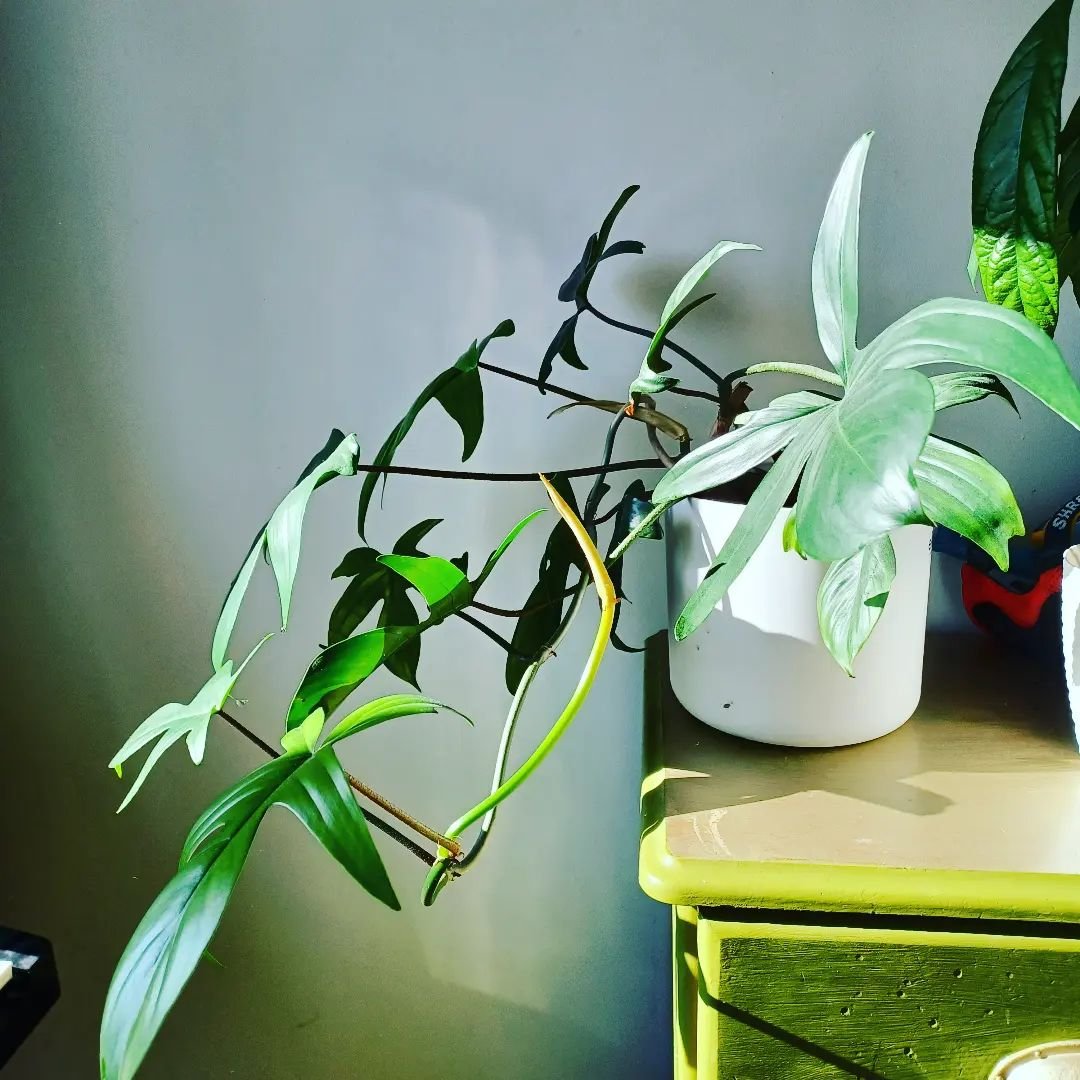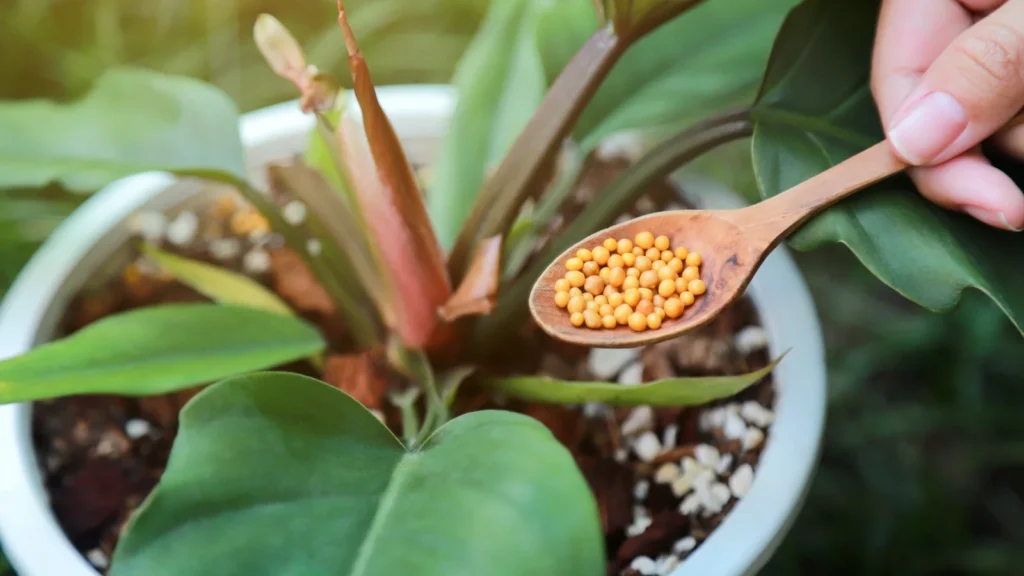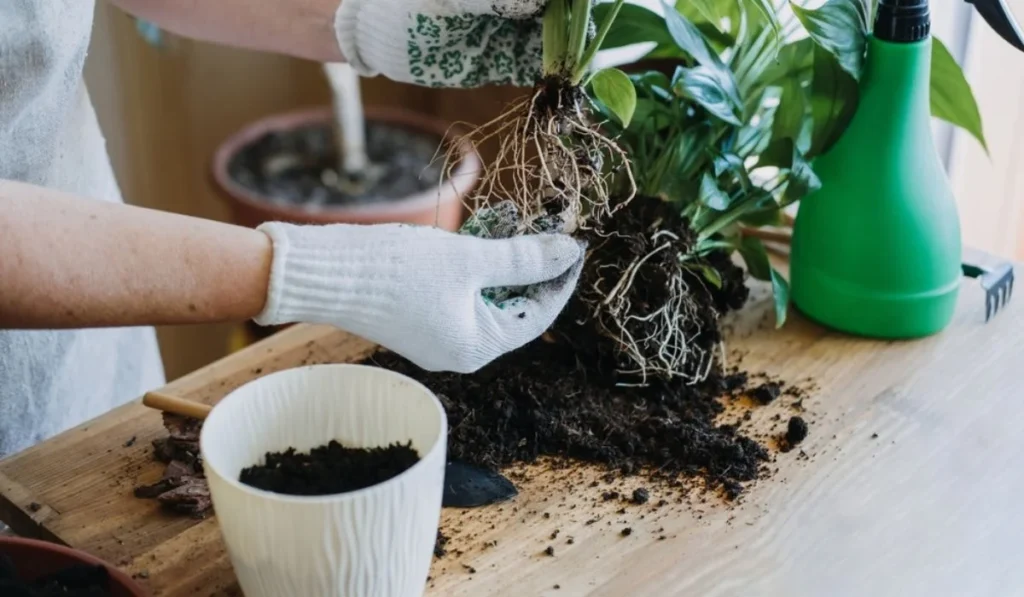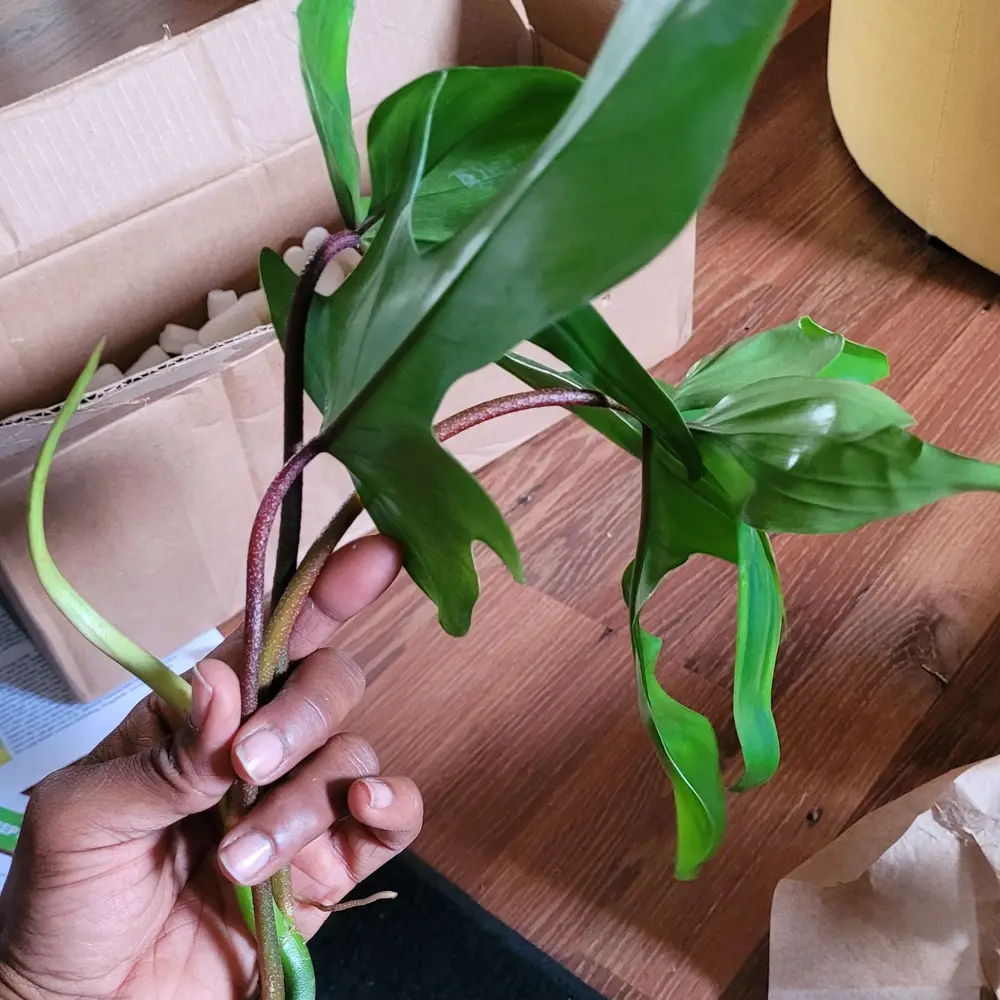The philodendron Florida Beauty dazzles with large, lobed leaves emerging deep red before maturing green. This care guide covers its light, water, humidity and soil needs for healthy growth indoors.
The philodendron Florida Beauty is a stunning hybrid cultivar prized by indoor gardeners. Its large, deeply lobed leaves emerge a vibrant pinkish-red before transitioning to a rich, velvety green as they mature.
This tropical plant is a cross between the philodendron squamiferum and philodendron pedatum species. It combines the best traits of its parents into one visually striking yet surprisingly hardy houseplant.
Like other philodendron varieties, the Florida Beauty originates from the rainforests of South and Central America. Bringing a bit of that lush, jungle vibe indoors, it makes an eye-catching accent or focal point in any room.
While not quite as easy as some other philodendrons, the Florida Beauty is still relatively low-maintenance when you understand its specific care needs. This guide covers everything you need to keep this tropical beauty thriving in your home.
Here’s a detailed chart for Philodendron plants:
| Category | Information |
|---|---|
| Botanical Name | Philodendron spp. (hundreds of species) |
| Common Name | Philodendron |
| Plant Type | Evergreen perennial (vining or non-vining) |
| Hardiness Zone | 9-11 (grown indoors in cooler climates) |
| Sun Exposure | Bright, indirect light; can tolerate low light but grows slower in low light |
| Soil Type | Well-draining potting mix; an aroid mix with peat, perlite, and orchid bark works well |
| Watering | Keep the soil evenly moist; allow the top 1-2 inches of soil to dry between waterings |
| Growth Habit | Vining or climbing for some species, while others are self-heading (grow in a bushy form) |
| Height/Spread | Varies widely: from 1-6 feet tall indoors depending on the variety |
| Special Features | Easy to care for; known for their air-purifying qualities and versatile growth habits, which make them great as either climbing or hanging plants |
| Leaf Shape | Typically heart-shaped, but varies depending on the species (can be lobed, deeply cut, or elongated) |
| Notable Varieties | Philodendron hederaceum (Heartleaf Philodendron), Philodendron gloriosum, Philodendron melanochrysum, Philodendron bipinnatifidum (Lacy Tree Philodendron) |
Light Requirements

Bright, indirect light is essential for the philodendron Florida Beauty to thrive. Aim to place it near an east or west-facing window where it receives 4-6 hours of bright, filtered rays each day.
Direct sunlight burns the leaves, causing discoloration and crispy, damaged spots. But inadequate light leads to smaller leaves, diminished coloring and leggy, stretched-out growth as it strains toward the light.
The goal is to mimic the dappled, shifting light levels the plant would receive on the rainforest floor. Rotate the pot periodically to ensure even lighting and prevent lopsided growth.
If your home lacks sufficient natural light, you can supplement with full-spectrum grow lights to help meet the plant’s light needs.
Watering Needs

Consistent, even moisture is key for the philodendron Florida Beauty’s health and lush, colorful foliage. Allow the top inch or two of soil to dry out slightly between waterings, but don’t let it become bone dry.
The best way to determine if your plant needs a drink is to check the soil moisture with your fingertip. If the top inch feels dry, it’s time to water.
During the spring and summer active growing season, you’ll likely need to water every 5-7 days. Cut back slightly in winter when growth naturally slows.
Always use lukewarm water to avoid shocking the plant. Water thoroughly until you see some excess draining from the bottom of the pot, then discard the drained liquid.
Signs your Florida Beauty needs more water include wilting, curling leaves, very dry potting mix and slowed growth. Overwatering shows up as leaf discoloration, fungus gnats and potential root rot.
Temperature and Humidity

This tropical philodendron variety thrives in warm, humid conditions similar to its native rainforest habitat. The ideal temperature range is 65°F to 85°F, though 75°F to 80°F is best.
Higher humidity of at least 40-50% encourages lush foliage growth and helps prevent spider mites and other pest issues. Most homes are too dry, so you’ll need to supplement moisture around the plant.
The easiest way to increase humidity is to set the pot on a pebble tray filled with water. As it evaporates, it creates a humid microclimate. Be sure the pot bottom isn’t submerged.
You can also group plants closely together or use a cool mist humidifier nearby. Regularly misting the leaves helps mimic the moist tropical air too.
Avoid placing your philodendron Florida Beauty near cold drafts, heating vents or excessive heat sources.
Potting Mix and Soil

Like all philodendrons, the Florida Beauty performs best in a loose, well-draining soil mix. This tropical plant is prone to issues like root rot if the potting mix remains waterlogged.
An ideal potting medium contains equal parts of the following:
- Peat moss or coir fiber
- Orchid bark or chunky perlite
- Compost or worm castings
This creates an open, porous mix that drains easily yet retains some moisture. You can buy a quality, well-draining tropical potting mix or amend a standard potting soil by adding orchid bark and perlite.
Fertilizing

For optimal philodendron Florida Beauty growth, feed with a balanced, complete liquid fertilizer every 4-6 weeks during the spring and summer.
Use a fertilizer labeled for use on houseplants, diluting it to half the recommended dose. Too many nutrients can damage the plant’s roots and cause fertilizer burn.
You can also apply a top dressing of worm compost or use a slow-release granular fertilizer in spring to provide steady nourishment over several months.
Avoid fertilizing in winter when growth naturally slows. Too many nutrients at this time leads to salt buildup and potential leaf burn.
Potting and Pruning

The Florida Beauty philodendron grows quite large over time, up to 4-6 feet tall and equally wide. It requires repotting every 2-3 years once the roots fill up the current container.
In early spring, repot into a container 2-3 inches wider than the previous pot. Use a fresh, well-draining tropical potting mix.
You can prune off any damaged, diseased or discolored leaves at any time using sharp, sterile pruners.
To keep the plant from getting unruly, you can cut off the growing tips of longer stems after a few new leaves have formed. This encourages fuller, bushier growth.
Common Problems

Most issues with philodendron Florida Beauty can be traced back to improper watering, lighting or environmental conditions.
Let’s review some of the most common problems:
- Leaves turning yellow – Indicates overwatering or overly wet soil. Let soil dry out some between waterings.
- Brown crispy leaf tips/edges – Caused by low humidity, dry air, excess fertilizer or sun exposure. Increase moisture and provide filtered light.
- Wilting/curling leaves – Signs of underwatering or very dry soil. Water thoroughly and increase humidity.
- Stunted growth – Usually insufficient light, underwatering or nutrient deficiency. Provide brighter conditions and fertilize during growing season.
- Fungus gnats – Soil stays too wet and doesn’t drain well. Let soil dry more between waterings and improve drainage.
- Leaf spots – Can indicate fungal or bacterial diseases aided by stagnant moisture or lack of air flow. Use fans and don’t overwet leaves.
With the right potting mix, watering habits and environment, the philodendron Florida Beauty typically avoids any major pest or disease problems. Quickly correct any issues that do arise.
Is It Toxic?
Yes, like all philodendron varieties, the Florida Beauty contains calcium oxalate crystals that make the leaves and stems poisonous if chewed or ingested.
Symptoms of toxicity include oral irritation, vomiting, nausea and difficulty swallowing. The sap can also cause skin irritation.
While considered only mildly toxic to humans and pets, it is still wise to keep this plant out of reach of curious kids and animals. Take basic precautions, and the philodendron Florida Beauty makes a wonderfully unique yet easy to grow houseplant.
Where to Purchase

Thanks to its popularity as an eye-catching ornamental plant, the philodendron Florida Beauty is becoming increasingly available from many retailers. Your local nursery or garden center is a great place to look, especially those specializing in tropical indoor plants.
If you struggle to find it locally, there are also numerous online plant sellers that offer high-quality specimens shipped directly to your doorstep. Some of the best sources include:
When ordering the Florida Beauty philodendron online, look for established, mature plants from reputable sellers. Check customer reviews and photos to ensure you’ll receive a high-quality, healthy specimen.
Inspect any plant you purchase carefully before bringing it home, whether from a local nursery or mail order. Look for lush, vibrantly colored leaves with no signs of pests, diseases or damage.
With its striking foliage and simple care requirements once you understand its needs, the philodendron Florida Beauty makes an enviable addition to any indoor plant collection. By providing the right light, water, soil and environment, this eye-catching tropical will thrive for years to come.
Follow the proper care guidelines in this guide, and you’ll be rewarded with a full, vibrant display of that signature deep red new growth maturing into lush, velvety green leaves. The philodendron Florida Beauty brings a bit of living jungle beauty right into your home or office space.
Pingback: Philodendron ‘Black Cardinal’: Growing and Care Tips -
Pingback: Philodendron Florida Beauty Care Guide | Garden...
Pingback: Exploring the Enchanting World of Blue Flowers
Pingback: Fittonia: Adding a Splash of Color to Your Home
Pingback: A Comprehensive Guide to Calathea varieties Gardeners School
Pingback: Identifying Plant Pests and Diseases: Tips and Insights
Pingback: Jessenia Pothos: A Gorgeous Addition to Your Indoor Plant Collection
Pingback: Maidenhair Fern Care : A Comprehensive Guide for Lush and Healthy Growth - Gardener's School
Pingback: How to Grow and Care for Peace Lily Plants : A Complete Guide
Pingback: Oxlip : A Delightful Primrose With a Rich History - Gardener's School
Pingback: Discover 18 Stunning Russian Flowers: A Visual Delight - Gardener's School
Pingback: 15 Popular Types of Succulents for Your Garden - Gardener's School
Pingback: Stunning Succulent Gardens: A Beginner’s Guide -